September 2020 Challenge: A Naturalist's Guide to Middle-earth

In spite of the focus of the narrative, Middle-earth isn’t all warfare, secret realms, and ambitious craftsmanship. There are scholars and explorers too - and a whole world to explore! This month’s challenge invites you to sneak a peek into these explorers’ notebooks for inspiration.
Prompts are images from historical naturalist publication - waiting for you to imagine how they may fit into Middle-earth (or Valinor, or Númenor, or…). You don’t have to write about naturalists, explorers or research expeditions unless you want to - just go wherever the prompt takes you. You can select the prompt or prompts that most inspire you from the collection below.
Prompts (click images for full-size)
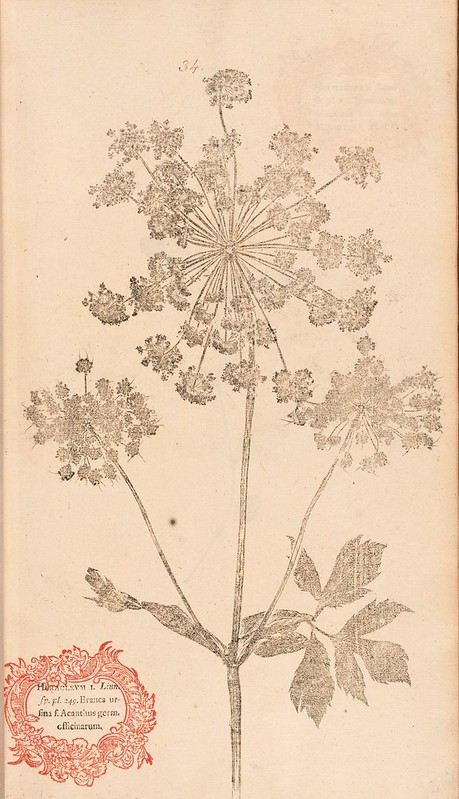
An umbellifer
Description: A faded ink print taken of a pressed umbellifer on a yellowing page. A small ornamental frame surrounds the scientific name of the plant.
Image Credit: Biodiversity Heritage Library
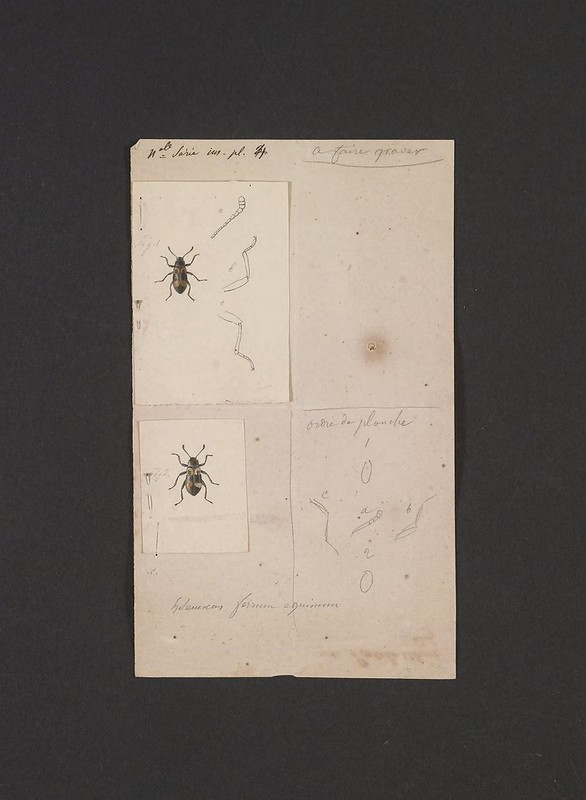
Two beetles and a sketch
Description: Two detailed, coloured drawings of different beetles, along with a sketch of a beetle’s legs and feelers, and some scrawled notes.
Image Credit: Biodiversity Heritage Library
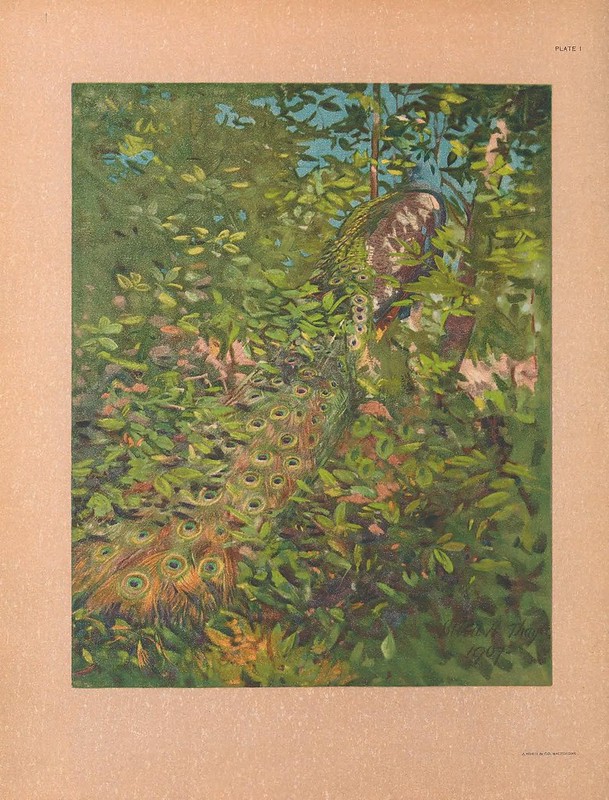
Peacock in a tree
Description: A coloured painting of a peacock sitting in a tree. Due to the dappled effect of shade and sunlight on the leaves, the peacock is quite well concealed in spite of its gaudy plumage.
Image Credit: Biodiversity Heritage Library
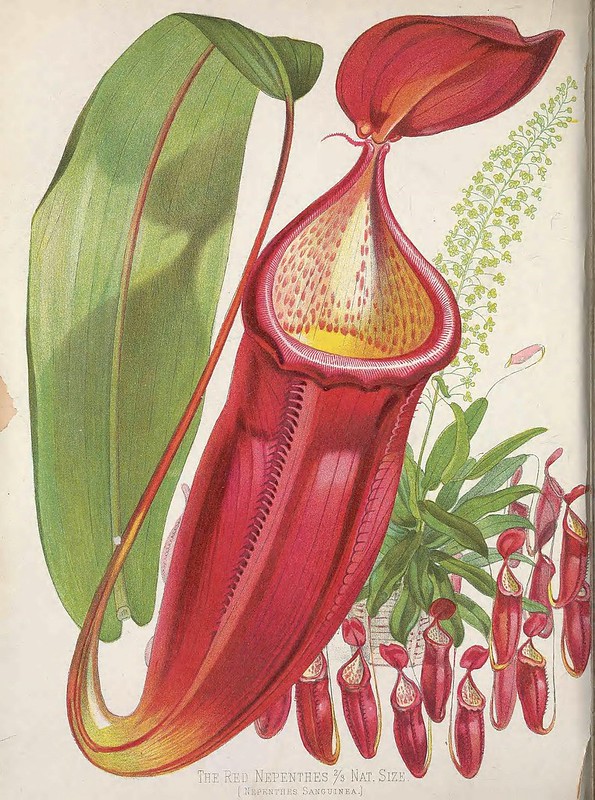
Pitcher plant
Description: A detailed depiction of one large and several small pitchers of a red pitcher plant, a tropical carnivorous plant that traps and devours small animals in its cans.
Image Credit: Biodiversity Heritage Library
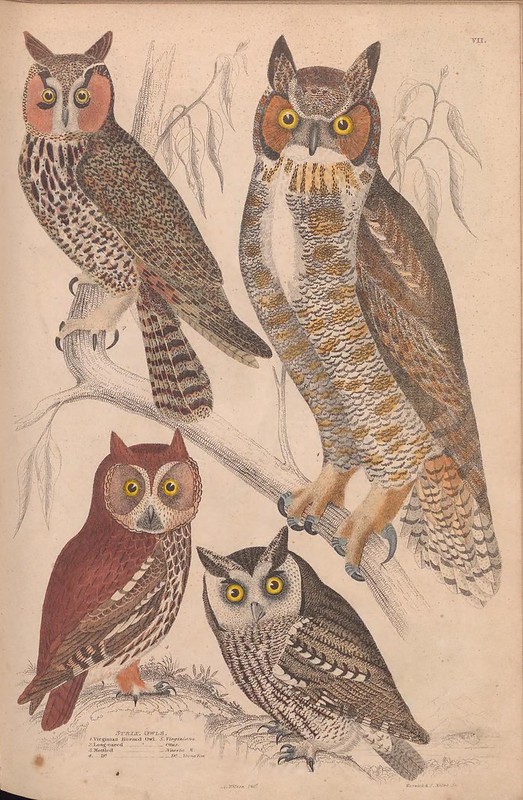
Owls
Description: For different species of owl depicted as sitting on a branch or on rocks. While the owls are detailed and shown in realistic colour, the background is merely softly sketched in monochrome, showing a wooded valley, a lake or broad river, and high mountains.
Image Credit: Biodiversity Heritage Library
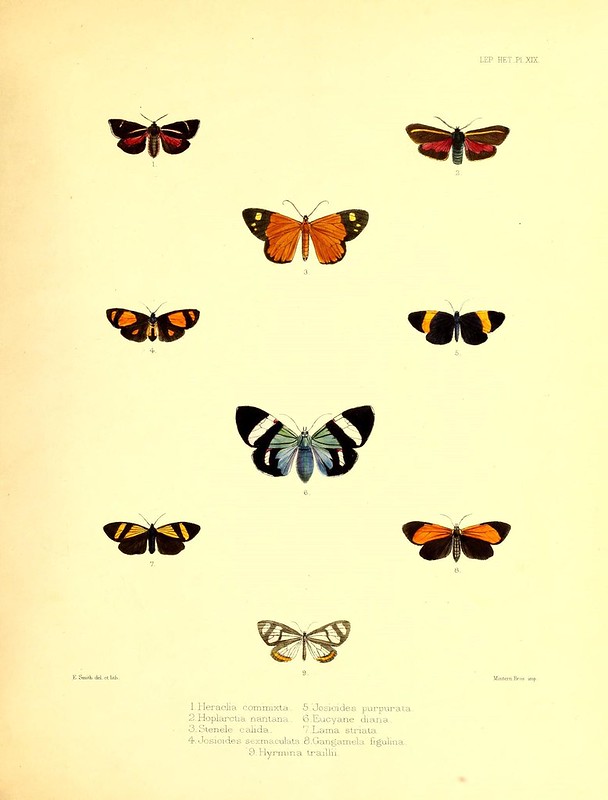
Small butterflies
Description: A coloured print of nine different small species of butterfly, neatly labelled.
Image Credit: Biodiversity Heritage Library
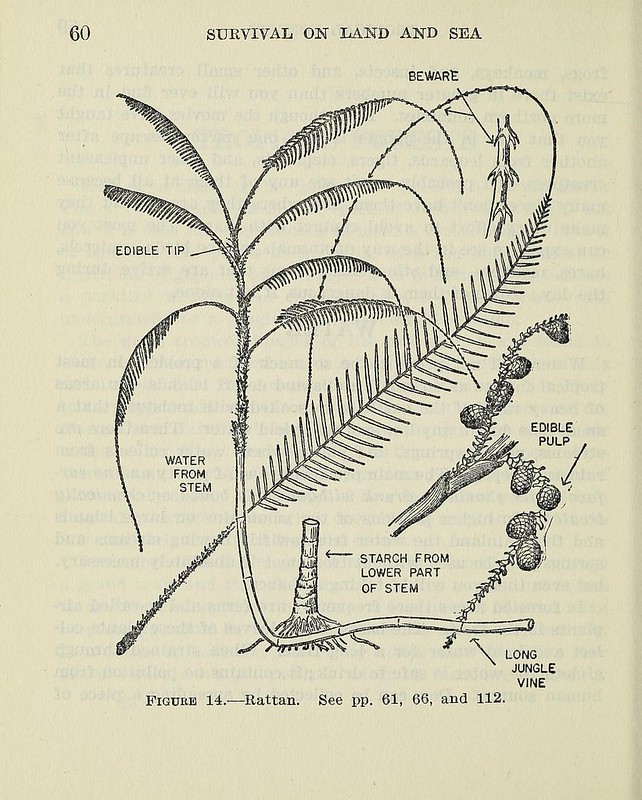
Survival on Land and Sea
Description: A page from a book titled “Survival on Land and Sea”, showing a rattan plant, its pats and their different uses: edible tip, water from stem, starch from lower part of the stem, edible pulp of the fruit, long jungle vine. Including a warning about the barbs on the vine.
Image Credit: Biodiversity Heritage Library
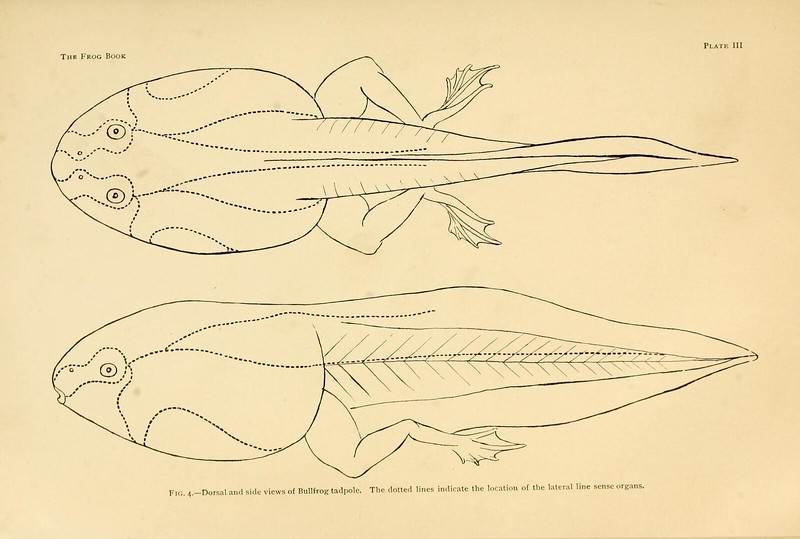
A tadpole
Description: An outlined dorsal and side view of a tadpole with its hind legs already developed. Dotted lines indicate the location of sense organs.
Image Credit: Biodiversity Heritage Library
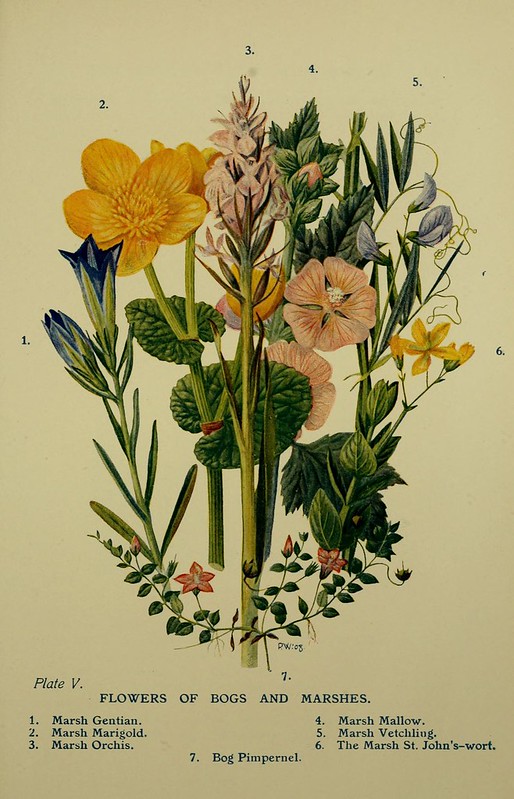
Flowers of bogs and marshes
Description: A detailed, coloured depiction of seven marsh plants: marsh gentian, marsh marigold, marsh orchis, marsh mallow, marsh vetchling, marsh st.-john’s wort, and bog pimpernel.
Image Credit: Biodiversity Heritage Library
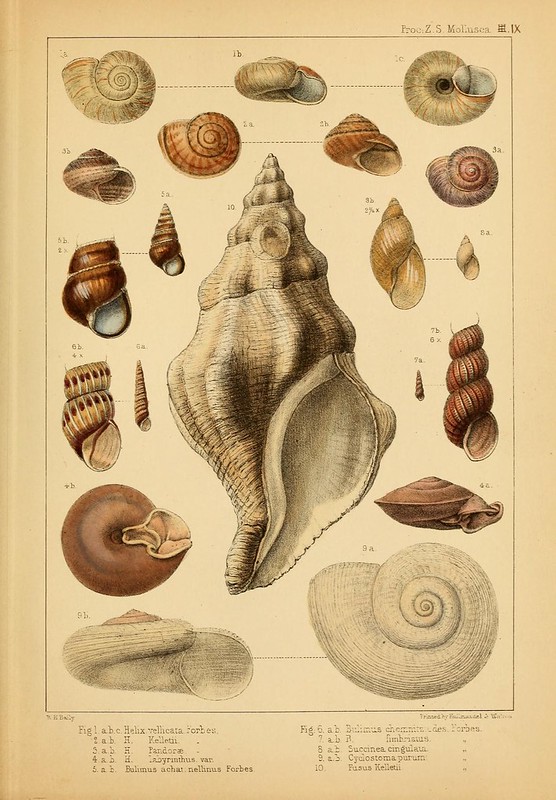
Sea and land snails
Description: A display of various species of sea and land snails, arranged around a large conch in the middle of the page.
Image Credit: Biodiversity Heritage Library
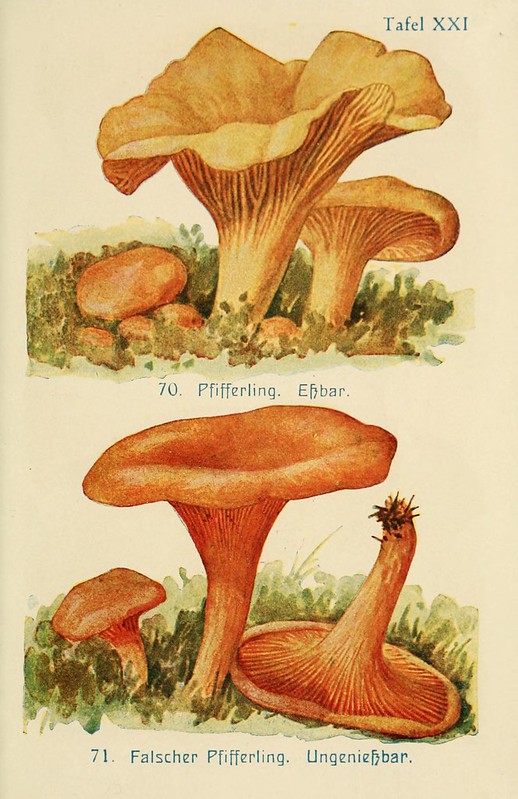
Mushrooms
Description: A detailed depiction of two similar mushrooms, a chanterelle and a false chanterelle; the first denoted as edible, the second unenjoyable.
Image Credit: Biodiversity Heritage Library
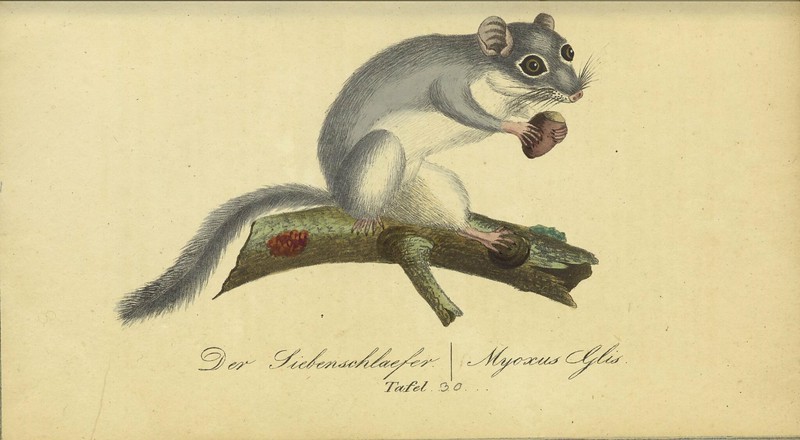
A Fat Dormouse
Description: A full color sketch of a fat dormouse, who despite the name is not much wider than the nut he’s holding.
Image Credit: Biodiversity Heritage Library
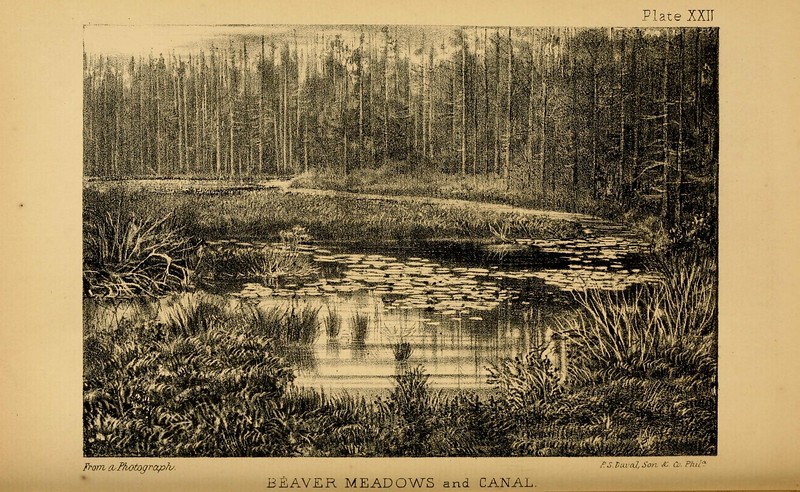
Beaver Meadows
Description: A pen and ink rendering of a beaver meadow, showing a pond with aquatic plants surrounded by grasses in the foreground and a stream running into trees in the background.
Image Credit: Biodiversity Heritage Library

Sloth
Description: A gray sloth, in watercolor with gold and silver paint on black-dyed vellum, nibbling on a tree branch.
Image Credit: The J. Paul Getty Museum
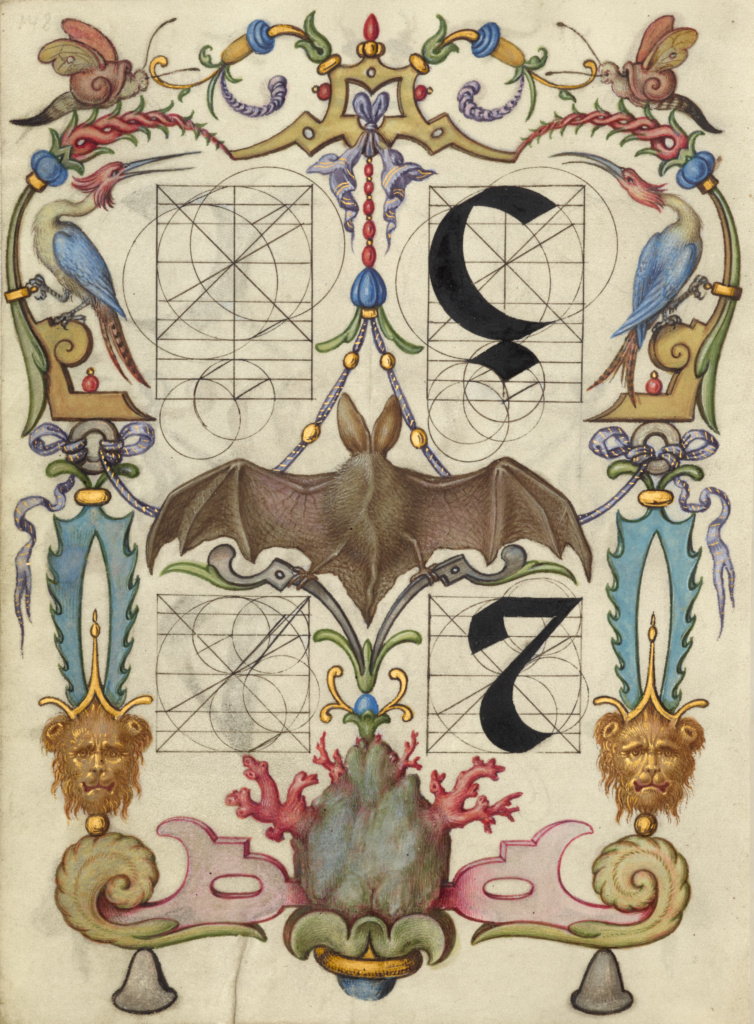
Bat with Coral and Fantastical Lions, Herons, and Moths
Description: In watercolor, a bat viewed from the back and a clump of coral beneath. While the bat is realistic, the lions, herons, and moths in the border are fantastical. Surrounding the bat are a calligrapher’s instructions for constructing two letters.
Image Credit: The J. Paul Getty Museum
In order to receive a stamp for your fanwork, your response must be posted to the archive on or before 10 October 2020. For complete challenge guidelines, see the Challenges page on our website.